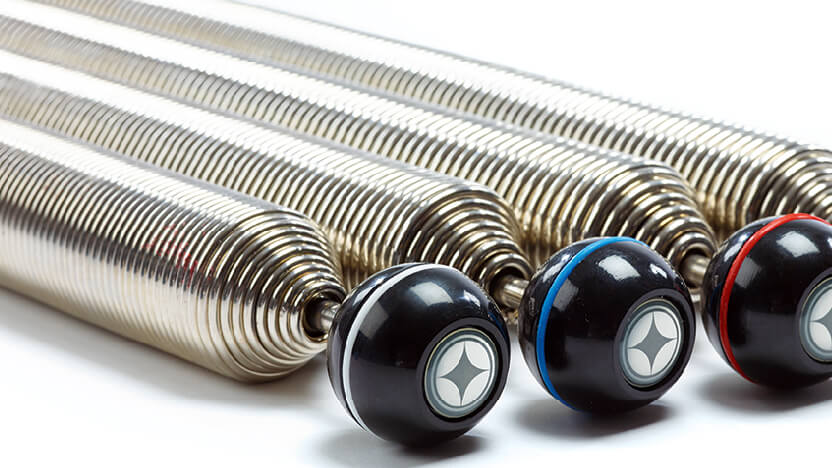Weight training is a popular form of exercise that many gravitate toward in order to increase muscle strength, with machines and free weights being the most common association for that type of training. So what’s the best way to respond to a client who asks if they can do ‘weight training’ on a Reformer?

When exercises from Merrithew’s STOTT PILATES programming are being performed on a Reformer, muscles are being trained on a level that’s different than conventional weight training. Technically, there is initial tension (lbs) per spring, as well as an increased rate in lbs/inch of extension of that spring. However, it would be inaccurate to consider this ‘weight training’ because how the muscles are being activated during a Reformer exercise is not the same as during a weight training exercise.
Essentially, while both methods have definite benefits and can provide functionally appropriate and biomechanically effective results, the use of spring resistance offers a broader range of exercise options and may be applicable for a wider demographic of exercisers, especially in a rehab setting.
Here’s a breakdown of what weights spring tension (Traditional Spring Package) on a Reformer would equate to.
- Fully loaded and fully extended (4 × 100% + 1 × 50%): 275 lbs (125 kg)
- 100% spring
- Initial position: 5.8 lbs (2.63 kg)
- Incremental 1.25 lbs/in (.57 kg)
- 50% spring
- Initial position: 3.5 lbs (1.59 kg)
- Incremental .63 lbs/in (.28 kg)
- 25% spring
- Initial position: 2.75 lbs (1.25 kg)
- Incremental .31 lbs/in (.14 kg)
It’s important to note that leg and torso length, as well as range of movement will vary from client to client, so the spring tension could be quite different for two individuals doing the same exercise.
Bodyweight exercises vs Reformer exercises
There’s a great deal of variation in resistance experienced from one exerciser to another when it comes to bodyweight training, because someone with a smaller body mass will require less muscular strength to perform the same moves than someone who weighs more. This discrepancy may not be in line with the actual requirements of the individuals in an exercise program.
On a Reformer, a client can remain in a comfortable position while the spring resistance can be altered depending on the goals of the exercise and the individual requirements. For example, more tension may be tolerated with an exercise that involves two legs, whereas it may be more effective to decrease tension when only one leg is used. This can also be beneficial when training the arms, shoulders or a multitude of other body parts, alone or in combination.
So when clients ask, “what the maximum resistance for leg work?” you can assure them that max spring tension may not always be the best way to work the legs depending on what exercise they’re performing.
The benefits of spring tension
For clients looking to increase strength, the use of gravity requires that there be a greater output of force to initiate the movement and the overall resistance may alter during the movement. When using springs, the resistance begins at lower level and gradually increases through the range of the motion providing the greatest amount of resistance at the end range of the movement. Spring tension will also allow for there to be tension through the full joint range, and on both the concentric and eccentric phases of the movement. In addition, unlike traditional weight training, some exercises can actually be made more challenging by decreasing the spring tension on the Reformer, rather than continually increasing it.
Incorporate accessories to broaden programming
A well-designed program often requires the use of accessories on a Reformer to provide additional training applications and/or modifications to an exercise. The exerciser can sit, lie or be situated in a variety of postures on the Reformer using props and cushions to facilitate the position. This provides an even larger selection of exercise options including a plethora of progressions and regressions.
Applying spring tension to a rehabilitation session
In addition, when we incorporate pulleys on a Vertical Frame, we can adjust the angle of resistance to target individual muscles and muscle groups as well as to perform exercises in a standing or kneeling position. These options allow us to increase our functional programming options for rehab patients, everyday clients or athletes in training.
Do you have a question you’d like our experts to answer? Let us know by emailing us at communications@merrithew.com or in the comments below.